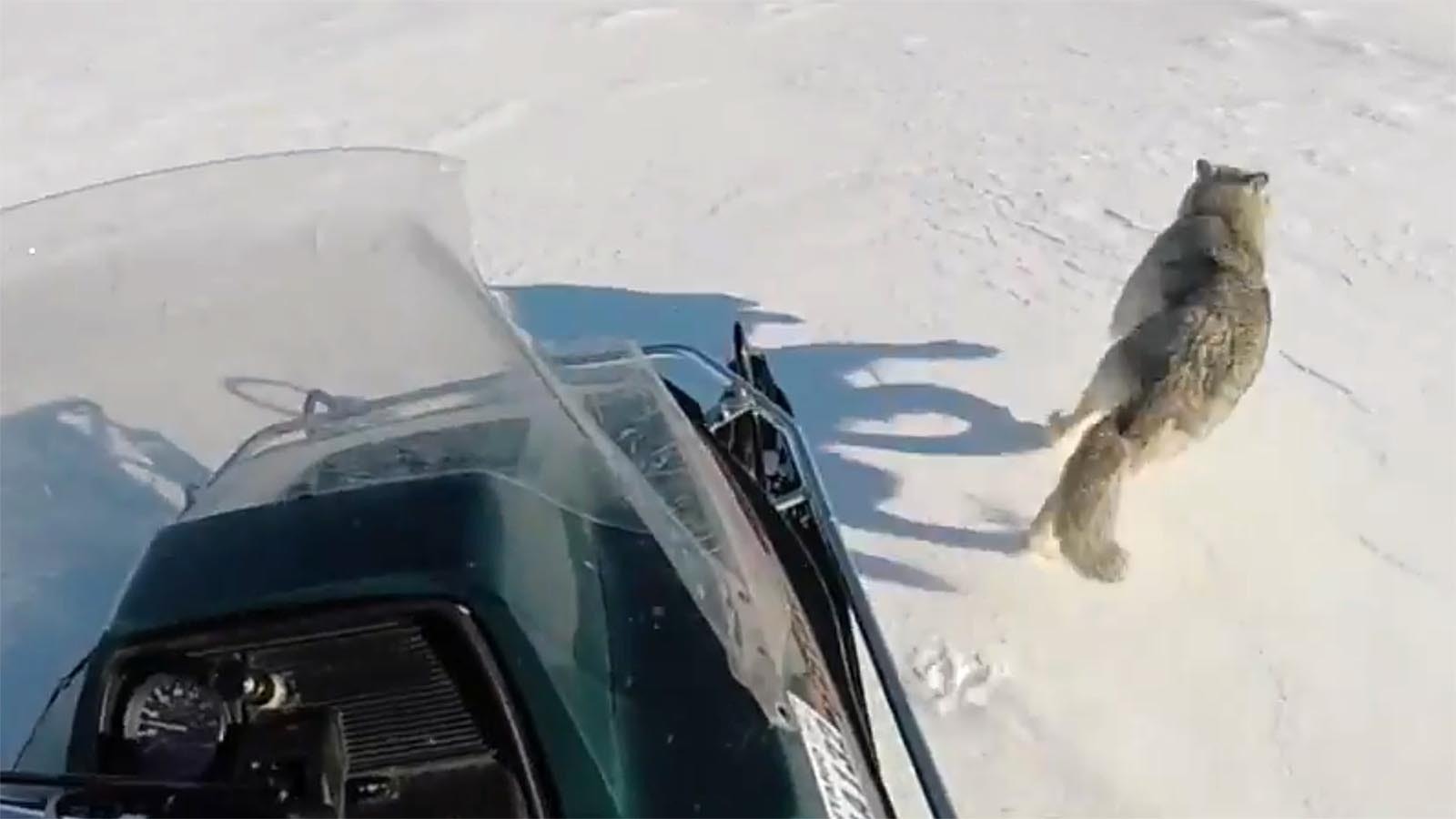A bear shot in Alaska last year officially set the new world record for a hunter-killed grizzly and is a stunning trophy, an expert Wyoming hunter said.
It’s definitely not a “meathead” bear, Guy Eastman of Cody — who has hunted grizzlies in Alaska and Canada — told Cowboy State Daily.
He was referring to how sometimes bears can have large heads, but only average-sized skulls. And skull measurements are what determine a bear’s trophy status.
Brian van Lanen shot the male bear, estimated to be 20-25 years old, in September 2024. He was guided on a combination moose and grizzly hunt near Norton Sound, Alaska, according to an announcement from the Boone and Crockett Club (B&C), confirming that the bear set a new record for the largest grizzly ever killed by a hunter.
The largest grizzly skull ever officially recorded by B&C came from a skeleton that was discovered in Alaska after the bear had died from natural causes.
No Small Feat To Make B&C Record Books
The record-setting hunter-killed grizzly is truly impressive, Eastman said.
“That’s huge. Huge,” he said in reaction to the bear’s official Boone and Crockett (B&C) score of 27-9/16 inches, according to skull measurements.
B&C bear scores are based on a compilation of measurements of width and length of the bear’s skull. The overall size and weight of the animal’s body doesn’t factor in, Eastman said.
He represents the third generation of the famous outdoor multimedia family that launched Eastman's Hunting and other outdoor media and has hunted numerous species of big game and trophy game animals throughout North America.
The B&C record books are the gold standard for hunting trophies, he said. The organization sets strict standards for fair-chase hunting and exact measurements for scores.
Hunters have slim chances of ever killing an animal that will be officially recorded in the B&C books. And getting something that will set a new record for a species is practically impossible, Eastman said.
Not ‘Meathead’ In The Archie Bunker Sense
Judging potentially trophy sized bears in the field is tricky, Eastman said.
Some gigantic-looking bears are actually “meatheads,” he said.
For the uninitiated, “meathead” in the sense that bear hunters use the term isn’t meant as a personal insult against certain bears.
Those old enough to recall the classic 1970s sitcom “All in the Family” will remember that the show’s lead character, Archie Bunker, frequently called his hapless son-in-law “meathead” as in “dead from the neck up.”
In the hunting world, calling bears meatheads doesn’t carry that demeaning context.
Rather, it means that the amount of muscle and other tissue in a bear’s head might make it look like a giant from the outside, although it has only an average-sized skull, Eastman said.
Before a bear skull can be officially measured, it must be completely cleaned of any fur, hide and tissue. Only bare bone counts.
Second-Biggest Grizzly Ever
As with all B&C records, measurement taken right after a bear is killed represent a “green score,” and can’t be counted as official.
That’s because skulls, antlers, horns and the like can retain moisture – so the trophy will likely shrink as it dries.
The official score can be taken only after a mandatory 60-day drying period, according to B&C standards.
The 27-9/16-inch score for van Lanen’s bear is based on official dry measurements and will be recognized during the B&C Big Game Awards event, July 24-26 in Springfield, Missouri.
Despite its prestigious status, it’s still not the largest grizzly skull ever officially recognized by B&C
That honor goes to a 27-13/16 skull of an already-dead grizzly recovered in 1976 by Gordon Scott near McGrath, Alaska. Scott stumbled across the grizzly’s bones while hunting black bears, according to B&C.

Lines Blur Between Brown, Grizzly Bears
From B&C’s standpoint, grizzlies and brown bears in Alaska are counted as separate species, even though genetically, they’re essentially the same, Eastman said.
It comes down to location, he said. Broadly speaking, bears living in coastal areas are considered brown bears, and those living in interior Alaska are counted as grizzlies.
Because they gorge themselves on salmon, coastal brown bears are absolute giants, sometimes tipping the scales to 1,500 pounds.
They can have larger skulls as well, putting them in a different trophy class.
Minimum brown bear B&C scores are 28 inches to qualify for all-time records and 26 inches to make the standard records book.
Minimum B&C Grizzly scores are 23 inches for book and 24 inches for all-time.
Humungous coastal brown bears are the stars of Alaska’s Fat Bear Week. The event calls on fans around the world to vote for their favorite rotund bears in Katmai National Park and Preserve, at the north end of the Alaska Peninsula.
Alaska interior grizzlies depend on other food sources, such as caribou carcasses, roots and berries.
While interior grizzly fare isn’t as packed with calories as the coastal bears’ diet, it’s still rich enough to let Alaska grizzlies reach sizes likely unattainable by Wyoming grizzlies.
In the Greater Yellowstone Ecosystem, male grizzlies average around 400 pounds, and females about 275 pounds.
Near The End Of His Life
At age 20-25, the new record-setting grizzly likely would not have lived much longer, Eastman said. It probably had worn teeth, making it extremely difficult for the bear to eat enough food.
Many trophy-sized bears are older animals “with scrawny bodies,” Eastman said.
Hunters killing older males also helps with bear conservation, because those bears can be “cub killers,” he said.
Male grizzlies will sometimes kill cubs that aren’t theirs, attempting to bring the mother bear back into heat and mating with her.
In May, a male grizzly killed two of the three yearling cubs of grizzly 1063, a popular bear in Grant Teton National Park.
Mark Heinz can be reached at mark@cowboystatedaily.com.





